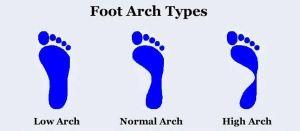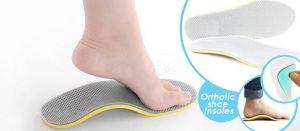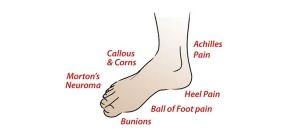Aybroad
Feet: how to care for your feet
Foot problems include athlete’s foot, plantar warts (verrucae), corns, smelly feet and infected toenails.
- Athlete’s foot is a fungal infection — also called tinea pedis. It is contagious via direct contact, wet floors and shared footwear.
- Plantar warts (verrucae) are flat warts in the sole of the foot. They are forced under the skin and may occur in clusters. The surface is greyish and crumbly, and they may contain small black points that are swollen blood vessels. Plantar warts are also contagious via wet floors. Like other warts, they will disappear on their own, but this may take up to 2 years.
- Corns are areas of hard skin that build up on parts of the foot that are subject to pressure or friction, such as on the little toe.
- Smelly feet are usually caused by excessive perspiration and an over-growth of fungi and/or bacteria.
- Infected toenails are commonly the result of a fungal infection, a condition known as onychomycosis. Toenails affected by onychomycosis are often brittle, discoloured or yellow.
What can you do to care for your feet?
Here are several steps you can take towards healthy feet.
- Wear thongs in public showers such as in camping grounds and gyms to help prevent you from contracting athlete’s foot.
- Wash your feet twice daily and dry them thoroughly, particularly between your toes. Use a clean towel.
- Change your socks daily and wear cotton, not synthetic, socks.
- Wash your socks and towels at a high temperature (hot cycle on washing machine).
- Wear well-fitting leather shoes that allow your feet to ‘breathe’ (synthetic shoes tend to increase the amount of perspiration) or wear open shoes or sandals to allow air to circulate freely.
- Bleach your shower/bath area.
- When applying corn or wart medication, make sure it does not get on the healthy, unaffected skin.
When should you seek medical advice?
All of the above conditions can be treated: some by medications that are available from pharmacists, while others, particularly fungal nail infections, can require prescription medication from your doctor. You should also seek medical advice if:
- you suffer from diabetes, as you may lack some feeling in your feet and that can lead to complications such as ulcers;
- you are elderly, as you may have poor circulation;
- you have a mole or dark-coloured spot on your foot;
- there is bleeding.
Diabetes - taking care of your feet
Diabetes can damage the nerves and blood vessels in your feet. This damage can cause numbness and reduce feeling in your feet. As a result, your feet may not heal well if they are injured. If you get a blister, you may not notice, and it may get worse.Check your feet every day. Inspect the top, sides, soles, heels, and between the toes. Look for:
- Dry and cracked skin
- Blisters or sores
- Bruises or cuts
- Redness, warmth, or tenderness
- Firm or hard spots
If you cannot see well, ask someone else to check your feet.Call your doctor right way about any foot problems. Do not try to treat them yourself first. Even small sores or blisters can become big problems if infection develops or they do not heal.Wash your feet every day with lukewarm water and mild soap. Strong soaps may damage the skin.
- Check the temperature of the water with your hands or elbow first.
- Gently dry your feet, especially between the toes.
- Use lotion, petroleum jelly, lanolin, or oil on dry skin. Do NOT put lotion between your toes.
Ask your health care provider to show you how to trim your toenails.
- Soak your feet in lukewarm water to soften the nail before trimming.
- Cut the nail straight across, because curved nails are more likely to become ingrown.
- Your foot doctor (podiatrist) can trim your nails if you are unable to.
Most people with diabetes should have corns or calluses treated by a foot doctor. If your doctor has given you permission to treat corns or calluses on your own:
- Gently use a pumice stone to remove corns and calluses after a shower or bath, when your skin is soft.
- Do NOT use medicated pads or try to shave or cut them away at home.
If you smoke, stop. Smoking decreases blood flow to your feet. Talk with your doctor or nurse if you need help quitting.Do not use a heating pad or hot water bottle on your feet. Do not walk barefoot, especially on hot pavement or hot sandy beaches. Remove your shoes and socks during visits to your health care provider so that they can check your feet.
Shoes and Socks
Wear shoes at all times to protect your feet from injury. Before you put them on, always check the inside of your shoes for stones, nails, or rough areas that may hurt your feet.
Wear shoes that are comfortable and fit well when you buy them. Never buy shoes that are tight, hoping they will stretch as you wear them. You may not feel pressure from shoes that do not fit well. Blisters and sores can develop when your foot presses against your shoe.
Ask your doctor about special shoes that can give your feet more room. When you get new shoes, break them in slowly. Wear them 1 or 2 hours a day for the first 1 or 2 weeks.
Change your broken-in shoes after 5 hours during the day to change the pressure points on your feet. Do not wear flip-flop sandals or stockings with seams. Both can cause pressure points.
Wear clean, dry socks or non-binding panty hose every day. They will help protect your feet. Holes in socks or stockings can put damaging pressure on your toes.
You may want special socks with extra padding. Socks that move moisture away from your feet will keep your feet drier. In cold weather, wear warm socks, and do not stay out in the cold for very long. Wear clean, dry socks to bed if your feet are cold.
Foot amputation - discharge
You have had a foot amputation. You may have had an accident, or your foot may have had an infection or disease and doctors could not save it.
What to Expect at Home
It will take time for you to learn to use a walker and a wheelchair. It will also take time to learn to get in and out of the wheelchair. You may also be getting a prosthesis, a manmade part to replace your limb that was removed. You will have to wait for the prosthesis to be made. When you have it, getting used to it will take time.
You will probably have pain in your limb for several days after your surgery. You may also have a feeling that your limb is still there. This is called phantom sensation.
You may feel sad, angry, frustrated, or depressed. All of these feelings are normal. You may have them when you were in the hospital or when you get home.
Self-care
Family and friends can help. Talking with them about your feelings may make you feel better. They can also help you do things around your house and when you go out.
If you feel sad or depressed, ask your doctor about seeing a mental health counselor for help with your feelings about your amputation.
If you have diabetes, keep your blood sugar under control.
If you have poor blood flow to your foot, follow your doctor's instructions for diet and medicines.
You may eat your normal foods when you get home.
Wound and Foot Care
Do NOT use your limb until your doctor tells you it is okay to use it again. This will be at least 2 weeks or longer after your surgery. Do not put any weight at all on your wound. Do not even touch it to the ground, unless your doctor says so. Do NOT drive.
Keep the wound clean and dry. Do not take a bath, soak your wound, or swim. If your doctor says you can, clean the wound gently with mild soap. Do not rub the wound, but allow water to flow gently over it.
After your wound heals, keep it open to the air unless your doctor or nurse tells you something different. After dressings have been removed, wash your stump with mild soap and water every day. Do not soak it. Dry it well.
Inspect your limb every day. Use a mirror if it is hard for you to see all around it. Look for any red areas or dirt.
Wear your elastic bandage or shrinker sock on the stump all the time. If you are using an elastic bandage, rewrap it every 2 to 4 hours. Make sure there are no creases in it. Wear your stump protector whenever you are out of bed.
Ask your doctor or nurse for help with pain. Two things that may help are:
-
Tapping along the scar and in small circles along the stump, if it is not painful
-
Rubbing the scar and stump gently with linen or soft cotton
Practice transfers at home:
-
Go from your bed to a chair, your wheelchair, or the toilet.
-
Go from a chair to your wheelchair.
-
Go from your wheelchair to the toilet.
If you use a walker, stay as active as you can with it.
Keep your stump at or above the level of your heart when you are lying down. When you are sitting, do not cross your legs. It can stop the blood flow supply to your stump.
When to Call the Doctor
Call your doctor if:
-
Your stump looks redder, or there are red streaks on your skin going up your leg.
-
Your skin feels warmer to touch.
-
There is swelling or bulging around the wound.
-
There is new drainage or bleeding from the wound.
-
There are new openings in the wound, and the skin around the wound is pulling away.
-
Your temperature is above 101.5° F more than once.
-
Your skin around the stump or wound is dark or is turning black.
-
Your pain is worse, and your pain medicines are not controlling it.
-
Your wound has gotten larger.
-
A foul smell coming from the wound.
Summer Foot Care
One perk of a beach-bound vacation is knowing that instead of snow soaking through your Choos or having your feet feeling toasty in sweaty Uggs, you can lounge happily with your toes dangling in the warm weather, shoe-free with the sand at your feet. But alas, the dream does come with its own set of tootsie troubles. "Even if you are just lying still on your back soaking up the rays, your feet are still vulnerable," says American Podiatric Medical Association member Dr. Jane Andersen. "You can seriously sunburn your feet and no matter how upscale your hotel, athlete's foot can lurk in all public pool areas."
Wouldn't you rather spend time collecting sea shells than doctor's bills? No worries. There are ways to prevent these future foot predicaments so you can go back to your sun-kissed dreams and enjoy a liberated foot experience.
- Limit walking barefoot as it exposes feet to sunburn, as well as plantar warts, athlete's foot, ringworm, and other infections and also increases risk of injury to your feet.
- Wear shoes or flip-flops around the pool, to the beach, in the locker room and even on the carpeting or in the bathroom of your hotel room to prevent injuries and limit the likelihood of contracting any bacterial infections.
- Remember to apply sunscreen all over your feet, especially the tops and fronts of ankles, and don't forget to reapply after you've been in the water.
- Stay hydrated by drinking plenty of water throughout the day. This will not only help with overall health, but will also minimize any foot swelling caused by the heat.
- Keep blood flowing with periodic ankle flexes, toe wiggles, and calf stretches.
- Some activities at the beach, lake or river may require different types of footwear to be worn so be sure to ask the contact at each activity if specific shoes are needed. To be safe, always pack an extra pair of sneakers or protective water shoes. If your shoes will be getting wet, they should be dried out completely before your next wearing to prevent bacteria or fungus from growing.
- If you injure your foot or ankle while on vacation, seek professional medical attention from a podiatric physician. Many often only contact a doctor when something is broken or sprained, but a podiatrist can begin treating your ailment immediately while you're away from home. Use our Find a Podiatrist tool to get treatment wherever your travels take you!
In case of minor foot problems, be prepared with the following on-the-go foot gear:
- Flip flops – for the pool, spa, hotel room, and airport security check points
- Sterile bandages – for covering minor cuts and scrapes
- Antibiotic cream – to treat any skin injury
- Emollient-enriched cream – to hydrate feet
- Blister pads or moleskin – to protect against blisters
- Motrin or Advil (anti-inflammatory) – to ease tired, swollen feet
- Toenail clippers – to keep toenails trimmed
- Emery board – to smooth rough edges or broken nails
- Pumice stone – to soften callused skin
- Sunscreen – to protect against the scorching sun
- Aloe vera or Silvadene cream – to relieve sunburns
High arch foot
Most people have an arch along the inner side of the foot, leaving a gap between the ground and the foot. Some feet have a higher arch than average. This is the opposite of a flatfoot. In combination with a higher arch, the ankle may be "rolled" outwards slightly - this is the opposite of a pronated foot. Often this gets referred to as pes cavus.
What does a high arch foot look like?
When standing with weight on the foot, the arch will appear higher. The heel often tilted inwards at the ankle (but not always). In many the toes will appeared clawed. When not standing the front half of the foot (forefoot) will appear to be dropped below the level of the rearfoot.
What causes high arch feet?
High arch feet may just be a normal variant (ie some people just have higher arches), some may be hereditary (ie runs in the family) and in some cases there may be an underlying neurological problem that is causing it.
What are the symptoms of a high arch foot?
The symptoms of a high arch foot will vary depending on how severe the condition is and the activity levels of the person with it. Most will have no pain or any other symptoms. Symptoms may vary from a mild problem with shoe fitting to significant disability.
Some of the symptoms can include:
- there may be corns and calluses under the bases of the first and fifth toes.
- Shoe may not fit very well because of the high arch and the clawed toes.
- There may be some pain in the arch area, because of the pressure that it is under.
- The feet will feel stiffer and less mobile than a foot that does not have a high arch.
- An ankle sprain are more common in those with a high arched foot.
How is the high arched foot treated?
This will depend on what is causing the pain, if anything. Initially a careful investigation is needed to rule out any neurological condition is causing the high arched foot.
Generally, treatment can involve:
-
The use of foot orthotics or insoles to support and protect the foot and relieve pressure areas.
-
Different sorts of pads made from silicone or felt can be used to get pressure off the painful areas
- If corns and callus are present, they can be treated by a Podiatrist.
- Proper fitting of footwear is important.
- In very sever cases, especially if pain is present and the height of the arch is progressively increasing in height, surgery may be considered.
Take the Wet Test: Learn Your Foot Type
A simple wet test can tell you if you have flat or high arches, and how to choose your running shoes accordingly.
How to Care for Your Feet and Toenails
Your feet are two of the most abused and often used parts of the body, what with all the walking and running that you do everyday. This being said, you should make sure to give your feet the attention and care they deserve every so often.
Choosing the right shoe inserts and insoles
When you are on your feet for long periods of time you become increasingly aware of how important your footwear is, this is especially true for those of us with any injuries ranging right from your feet up through to your lower back. If your shoes aren't supporting you properly, the movement inside your shoes may lead to blisters, foot pain and misalignment that will be painful for other parts of your body.
Flat Feet Causes and Prevention
Flat feet is also know as pes planus, adult acquired flat foot deformity, progressive flat foot deformity, posterior tibial tendon dysfunction (PTTD), flat foot, splay foot, fallen arches (loss of medial longitudinal arch of foot).
8 Common Foot Problems
Fungal and Bacterial Conditions, including athlete's foot, occur because our feet spend a lot of time in shoes - a warm, dark, humid place that is perfect for fungus to grow. Fungal and bacterial conditions can cause dry skin, redness, blisters, itching, and peeling.




